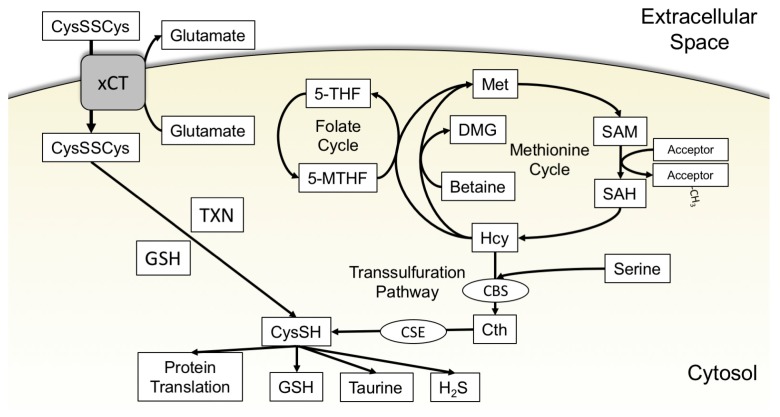Figure 1.
Acquisition of cysteine from extracellular cystine through xCT and de novo production of cysteine through the transsulfuration pathway. (Left) Extracellular cystine is transported into the cell through xCT while glutamate is exported. Thioredoxin or glutathione reduce cystine to cysteine, which is subsequently used for the synthesis of proteins, glutathione, and other sulfur-containing molecules. (Right) The de novo cysteine synthesis pathway (transsulfuration) requires the sulfur group from methionine. In the methionine cycle, methionine is adenosylated to produce SAM. SAM donates a methyl group to a methyl acceptor (protein, RNA, or DNA) to generate SAH. SAH hydrolase (not shown) generates Hcy from SAH. Hcy can regenerate methionine by accepting a methyl group from betaine or 5-MTHF from the folate cycle. Hcy can alternatively exit the methionine cycle via its condensation with serine by CBS in the first step of the transsulfuration pathway to produce Cth. Cth is subsequently hydrolyzed by CSE to ammonia (not shown), α-ketobutyrate (not shown), and cysteine. 5-MTHF: 5-tetramethylhydrofolate, 5-THF: 5-tetrahydrofolate, Cth: cystathionine, CBS: cystathionine β-synthase, CSE: cystathionine γ-lyase, CysSH: cysteine, CysSSCys: cystine, DMG: dimethylglycine, GSH: glutathione, Hcy: homocysteine, Met: methionine, SAH: S-adenosylhomocysteine, SAM: S-adenosylmethionine, TXN: thioredoxin.

